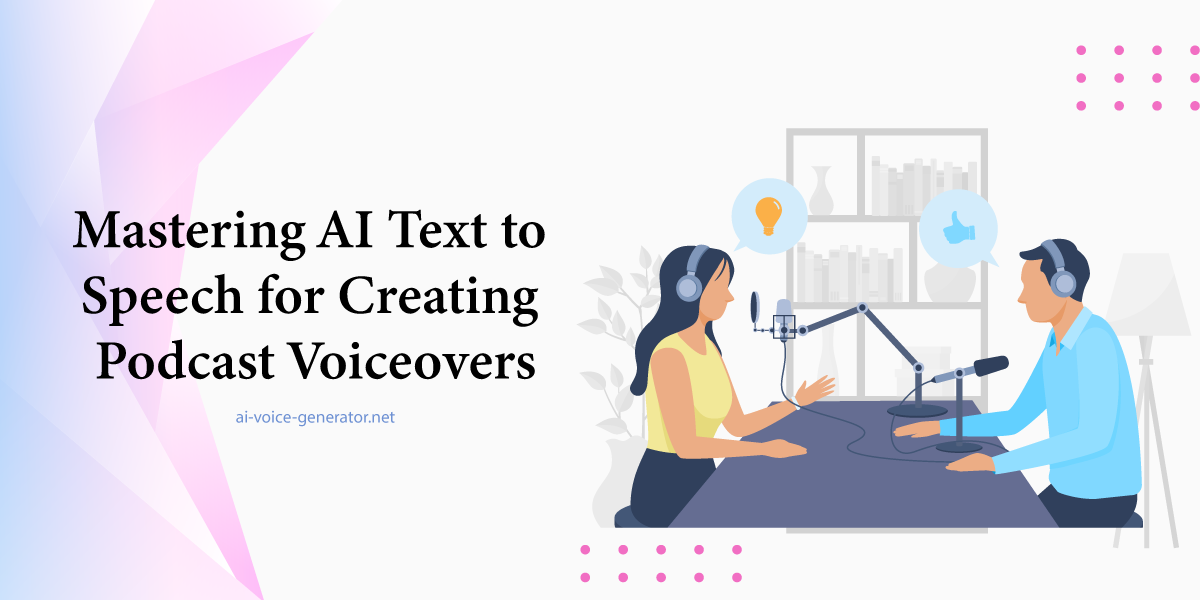Text to Speech: Enhancing Accuracy and Naturalness in AI Voices
The world of text to speech technology has come a long way from robotic, monotone voices to natural-sounding speech that closely mimics human intonation. Today’s AI-driven voice generators use advanced algorithms to produce clear and expressive speech, overcoming many of the earlier limitations of synthetic voices. This progression is essential not just for casual users but also for industries that rely on lifelike audio for accessibility, media, and communication.
While there are many text to speech free tools available online, the difference lies in the accuracy and fluidity of the voice output. High-quality AI voices sound more engaging and can hold listener attention better than basic computer-generated audio. The ability to generate natural speech that conveys emotions and subtle pauses significantly improves user experience across applications such as audiobooks, virtual assistants, and language learning platforms.
Understanding how AI text to speech systems work helps explain why some voices sound more authentic. These systems analyze patterns in human speech, including rhythm, pitch, and stress, to produce voices that feel dynamic rather than flat. By training on massive datasets of real speech, AI models learn to replicate natural speech nuances, making conversations with machines feel more genuine.
How AI Text to Speech Enhances Voice Accuracy
One of the main challenges in creating synthetic voices is ensuring that they sound accurate and free from unnatural glitches. The best text to speech generator platforms use neural networks that model human speech intricacies more precisely than traditional concatenative or rule-based systems. These AI models predict how speech sounds in context, which improves pronunciation and intonation.
Accurate voice synthesis depends heavily on prosody—the rhythm, stress, and intonation patterns of speech. Early speech generators often mispronounced words or used a flat tone, making listening exhausting. Modern text to speech voices now incorporate sophisticated prosodic features, resulting in speech that flows naturally. This means that the generated audio reflects pauses, emphasis, and pitch changes just like a real human voice would.
The technology also deals with homographs—words spelled the same but pronounced differently based on context. For example, “lead” can be pronounced differently depending on whether it refers to guidance or a metal. AI-powered text to speech online platforms use contextual understanding to determine the correct pronunciation, a feature missing from less advanced generators.
Naturalness in AI Voice Generation: The Role of Deep Learning
Deep learning techniques have revolutionized text to voice generator tools by allowing models to learn from vast amounts of speech data. These models go beyond simple rule-based conversions and use end-to-end learning to synthesize speech directly from text. This shift enables the generation of highly natural voices that adapt to the style and mood of the content.
Some AI voice systems also offer voice customization, allowing users to adjust speed, tone, and emotion. These controls let creators produce speech that fits different scenarios, whether it’s a calm narration or an energetic advertisement. This flexibility makes free online text to speech tools more versatile for creators and businesses alike.
Neural TTS (Text-to-Speech) engines have made significant strides in mimicking human-like breath sounds, slight hesitations, and other vocal quirks. These tiny imperfections add to the authenticity of the voice, preventing it from sounding too mechanical. The increased attention to such details is why listeners now find AI voices more relatable and easier to engage with.
If you want to experience some of the most natural and accurate AI-generated voices available today, AI Voice Generator offers a robust platform with a wide selection of voices and customization options. It balances ease of use with advanced features, making it ideal for both beginners and professionals.
The Impact of Voice Quality on User Experience
Voice quality is a major factor in determining the usefulness of any text to audio free service. Poor voice quality can cause misunderstanding, reduce accessibility, and create frustration. On the other hand, clear and natural voices make audio content more accessible to people with reading difficulties or visual impairments.
In education, for example, realistic AI voices can help learners by providing clear pronunciation and proper emphasis. This enhances language comprehension and retention. Similarly, in customer service, AI voices that sound natural and warm can improve user satisfaction during automated phone interactions.
Another aspect is multilingual support, where AI voice generators must accurately handle different languages and accents. High-quality text to speech platforms offer a variety of voices and dialects, enabling global reach and inclusivity. This is crucial for businesses operating internationally and for content creators targeting diverse audiences.
Technical Challenges Behind AI Voice Generators
Although AI voice technology has advanced, achieving naturalness remains complex. One technical challenge is balancing clarity with expressiveness. Sometimes, overly expressive synthetic voices can sound exaggerated or distracting. Finding the right tone that fits the context is a nuanced task for developers.
Latency also matters, especially for real-time applications like virtual assistants or live captioning. Fast generation of audio without compromising voice quality requires optimized algorithms and powerful computing resources. This is why some text to speech online tools prioritize speed, while others focus on premium voice realism.
Data privacy is another consideration. Training AI models requires large amounts of voice and text data, raising concerns about how this information is sourced and used. Ethical AI voice generators ensure data is anonymized and obtained with consent, aligning with modern privacy standards.
Practical Uses of AI Voice Generators Beyond Accessibility
While accessibility remains a top use case for AI voice technology, many industries benefit from enhanced text to speech voices. In media production, synthetic voices allow creators to generate voiceovers without studio time or actors. This reduces costs and speeds up content creation, especially for explainer videos, advertisements, and e-learning modules.
Gaming is another field embracing AI voices to bring characters to life. Developers use text to speech free tools to prototype dialogue or create dynamic speech that reacts to player actions. This flexibility allows richer storytelling and immersive experiences.
Podcasters and broadcasters increasingly adopt AI-generated voices for narration and filler content. High-quality voices maintain audience engagement without sounding artificial, making these tools indispensable for quick-turnaround projects.
Choosing the Right Text to Speech Tool
Not all text to speech generator platforms deliver the same quality. Some free versions might lack advanced prosody or naturalness, while premium options offer better customization and voice options. When selecting a tool, consider the following factors: voice variety, customization settings, output formats, and API access for integration.
The user interface and ease of use also matter. Many users prefer platforms that allow quick text input and instant audio generation. Some tools include features like pronunciation editors and SSML (Speech Synthesis Markup Language) support to fine-tune speech output.
How AI Voice Technology Is Shaping the Future of Communication
The evolution of AI text to speech is changing how humans interact with machines. As synthetic voices become more natural, they bridge the gap between digital and human communication. This transformation opens new possibilities for inclusivity, creativity, and efficiency.
One exciting development is voice cloning, where AI can replicate a specific person’s voice. This raises both creative opportunities and ethical questions. Proper regulations and transparent use policies will be necessary to ensure voice technology benefits everyone responsibly.
Moreover, AI voices are becoming integral to smart home devices, virtual assistants, and customer engagement platforms. Clear and expressive speech enhances user trust and satisfaction, encouraging wider adoption of AI
AI text to speech generates natural and accurate synthetic voices, improving accessibility and user engagement.
-powered solutions.
Frequently Asked Questions (FAQs)
AI text to speech generates natural and accurate synthetic voices, improving accessibility and user engagement.
Free tools are great for casual use, but premium platforms offer better voice quality and customization for professional needs.
AI analyzes speech patterns like intonation and rhythm, enabling voices to sound more human-like and expressive.
Yes, many platforms support various languages and accents to serve a global audience effectively.
Most advanced tools let users adjust pitch, speed, and emotion to match different contexts and preferences.

